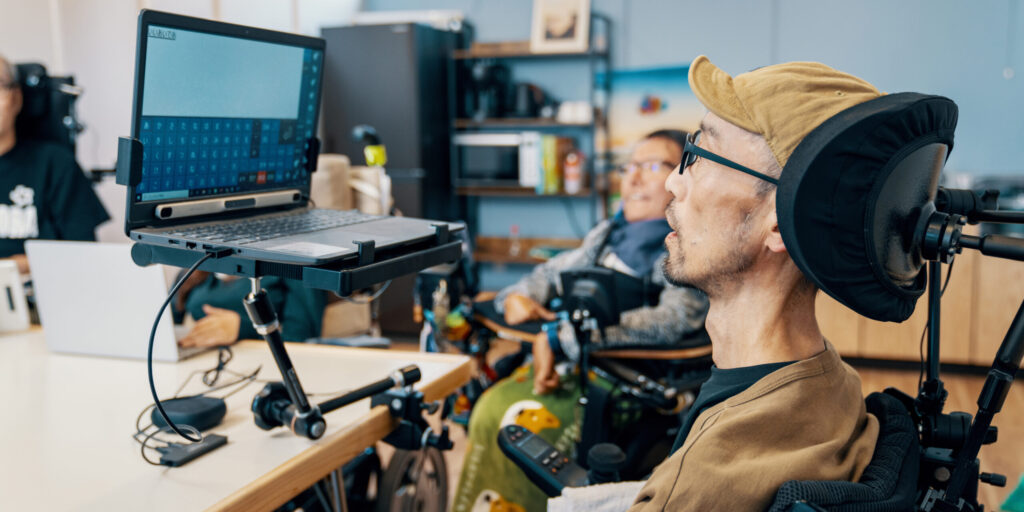
Nongenetic Factors May Increase Odds of Developing ALS
By Amy Madsen | Wednesday, May 1, 2024
Everyone is born, and everyone dies. What happens in between — colds and flu, cardiac problems, cancer, amyotrophic lateral sclerosis (ALS) — is anyone’s guess. And people do guess. It’s common — indeed, almost universal — after receiving a diagnosis for any condition to question whether something could have been done to prevent it.
In some cases, what a person does or doesn’t do has no bearing on whether they develop a disease later in life. This is because their DNA (genetic “blueprint”) may feature certain mutations or variants that cause them to develop the disease or raise the risk of developing it. For example, certain mutations in the SOD1, TARDBP43, FUS, and C9ORF72 genes are known to cause ALS. Other genetic abnormalities, such as expansions in the ATXN2 gene, are associated with a higher risk of developing the disease.
However, some diseases can be caused, at least in part, by things that can’t be found in a person’s genetic makeup. These are called nongenetic risk factors.
For example, an unhealthy diet is often pinpointed as the cause of certain types of heart disease, and too much exposure to the sun has been identified as a cause of skin cancer.
So, what about ALS? Do factors beyond genes cause or increase the chance of developing the disease? What are some of the possible nongenetic risk factors for ALS, what is known about them, and what are scientists doing to learn more?
Risk factors for ALS
Currently, causative gene mutations can be identified in less than 20% of ALS cases, leaving a lot of room for the possible involvement of other factors.
Age and biological sex are consistent and accepted ALS risk factors. Older age is positively associated with the risk of developing ALS, and men are slightly more likely to develop ALS than women. Studies suggest an overall ratio of about 1.2 men to every woman who develops the disorder.
One hint that the environment also may play a role is the history of ALS in Guam, where the incidence of the disease between 1940 and 1965 reached 50 to 100 times its worldwide rate and became the leading cause of death among Indigenous Guamanians.
Most ALS in Guam at that time was associated with Parkinson-dementia complex (PDC), a disorder that combines the tremor of Parkinson’s disease with the memory loss of Alzheimer’s. ALS-PDC wasn’t found among non-native Guamanians.
The high rates of ALS in Guam have since been attributed to inclusion in the Indigenous peoples’ diet of poisonous nuts from the cycad tree, and the incidence of both ALS and ALS-PDC among Guamanians has dropped dramatically over the course of several decades. Such rapid change isn’t consistent with genetics and is a powerful indicator that a change in their diet played a key role.
Risk in the environment
Nongenetic risk factors for ALS may exert influence alone or in combination.
Common environmental factors suspected of contributing to ALS include geographic location, diet and nutrition, exercise and sports, alcohol or tobacco use, occupation, electric shock, exposure to chemicals or radiation, and concussion or other physical injury.
Studying nongenetic risk factors is complicated and deserves additional research, but some suspicion also falls on air, water, or soil pollution; materials used in the construction of houses and roads; land management techniques; agricultural methods, including pesticides and irrigation practices; algae blooms in fresh water; and climate and climate change. Economic status and availability of healthcare also impact when and how ALS is diagnosed.
Join a registry to advance science
Understanding the risk factors for developing a disease and possible causes can provide scientists with a better understanding of how to potentially develop treatments and therapies for those diseases. Epidemiology — from Greek, meaning “the study of what is upon the people” — is the study of the patterns, causes, and effects of human health and disease.
Epidemiologists design and conduct studies, collect and analyze data, and often help interpret and share their findings.
What epidemiologists learn about the nature of a disease is used in medicine and therapy development and informs policy decisions related to public health.
People can help epidemiologists identify ALS risk factors and how they contribute to developing the disease by participating in disease registries, which collect information on demographics and lifestyle factors, and biorepositories that collect biological samples.
For more information on joining a registry, see the National ALS Registry and MDA’s Neuromuscular Observational Research (MOVR) Data Hub.
Next Steps and Useful Resources
- May is ALS Awareness Month! See what MDA is doing.
- Read about MDA’s impact on ALS.
- Listen to a Quest Podcast about the power of ALS registries.
- Learn how you can participate in research to advance treatments.
- Stay up-to-date on Quest content! Subscribe to Quest Magazine and Newsletter.
- For more information about End ALS click here.
Disclaimer: No content on this site should ever be used as a substitute for direct medical advice from your doctor or other qualified clinician.




